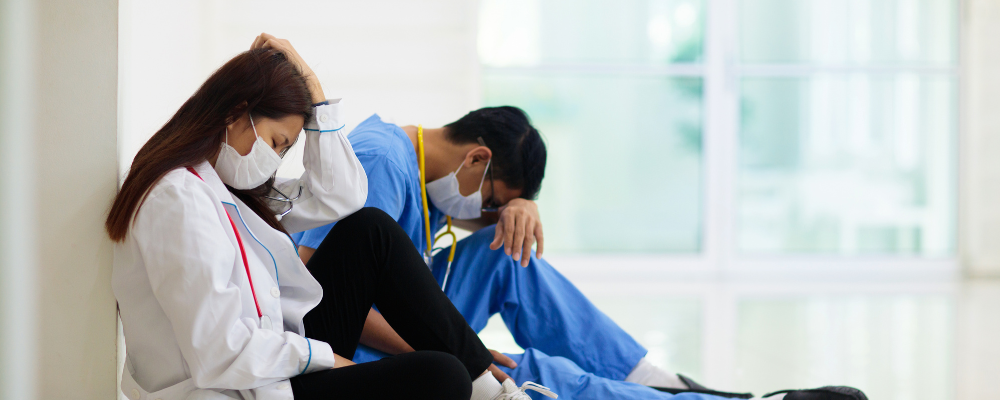Most agree that with every job comes some amount of stress. However, healthcare workers might argue that their stress load is much higher than other professions. According to a 2020 study conducted by researchers from the AMA, 43% of nurses reported work overload, and 49% had nurse burnout symptoms. [1]
The World Health Organization classifies burnout in the ICD-11 as an occupational phenomenon characterized by three different dimensions [2]:
1. Feelings of energy depletion or exhaustion.
2. Increased mental distance from one’s job or feelings of negativism or cynicism related to one’s job.
3. Reduced professional efficacy.
Unsurprisingly, the pandemic is to blame for exacerbating these already existing problems. Many patients have delayed seeking medical care creating a backlog. Technological advances have lengthened the lifespan of people with chronic diseases adding volume to an already aging population. Additionally, the long shifts, lack of available staff, high-stress work environment, and inconsistent sleep schedules put an additional strain on nurses. All of these presented issues can lead to mistakes in patient care, resulting in unintentional harm, infection, and low patient satisfaction scores. [3] Walkouts across the country have attracted media attention, including the most recent protests at Mount Sinai Hospital in Manhattan, NY. According to the Cornell University School of Industrial and Labor relations, there were 385 strikes in 2022, a 42% increase from 270 in 2021. [4] The largest was the September strike which stretched over 3 days and involved 15,000 members of the Minnesota Nursing Association.
With shortages in the health care system, nurses need innovative products that are reliable and effective, saving them time and effort. The CareDry® System’s technology utilizes an ultra-hydrophilic sponge combined with 360-degree suction, an improvement from older generations of external catheters that relied on gravity. With the CareDry® System, your nursing staff can leave the external catheter on their patient for longer, decreasing the frequency of patient changes. Patients will be dryer and safer for extended periods of time with our moldable sponge that can conform to the patient’s unique anatomy. In addition, the CareDry® System’s sponge contains two antimicrobials to inhibit the growth of harmful bacteria on the sponge. Floor staff will have to answer fewer call bells regarding incontinent patients, exert less physical labor turning patients in their beds, and spend more of their valuable time addressing critical situations.
[1] Berg, S. (2021, July 20). Half of Health Workers Report burnout amid covid-19. American Medical Association. Retrieved February 16, 2023, from https://www.ama-assn.org/practice-management/physician-health/half-health-workers-report-burnout-amid-covid-19
[2] World Health Organization. (2019, May 28). Burn-out an “Occupational phenomenon”: International Classification of Diseases. WHO. Retrieved February 16, 2023, from https://www.who.int/news/item/28-05-2019-burn-out-an-occupational-phenomenon-international-classification-of-diseases
[3] Cimiotti, J. P., Aiken, L. H., Sloane, D. M., & Wu, E. S. (2012). Nurse staffing, Burnout, and health care–associated infection. American Journal of Infection Control, 40(6), 486–490. https://doi.org/10.1016/j.ajic.2012.02.029
[4] Cornell University . (2022, February 21). Labor Action Tracker. ILR Worker Institute . Retrieved February 16, 2023, from https://www.ilr.cornell.edu/worker-institute/blog/reports-and-publications/labor-action-tracker-annual-report-2021
Back to Blog


